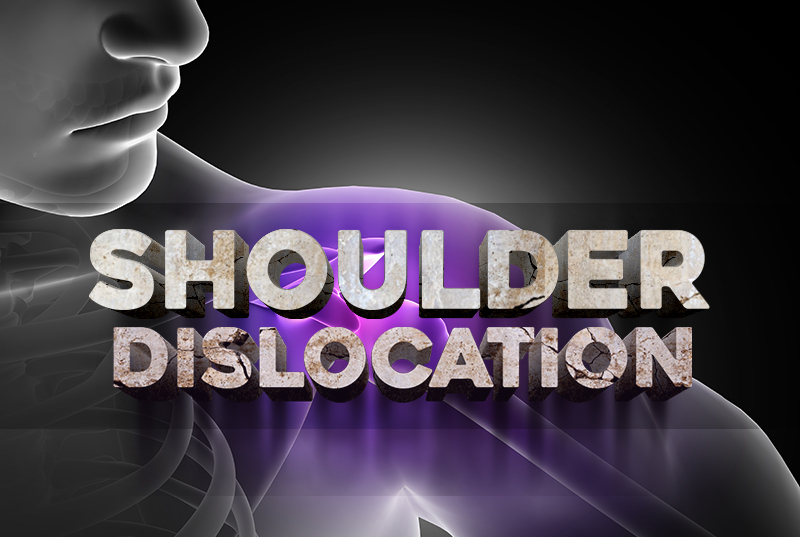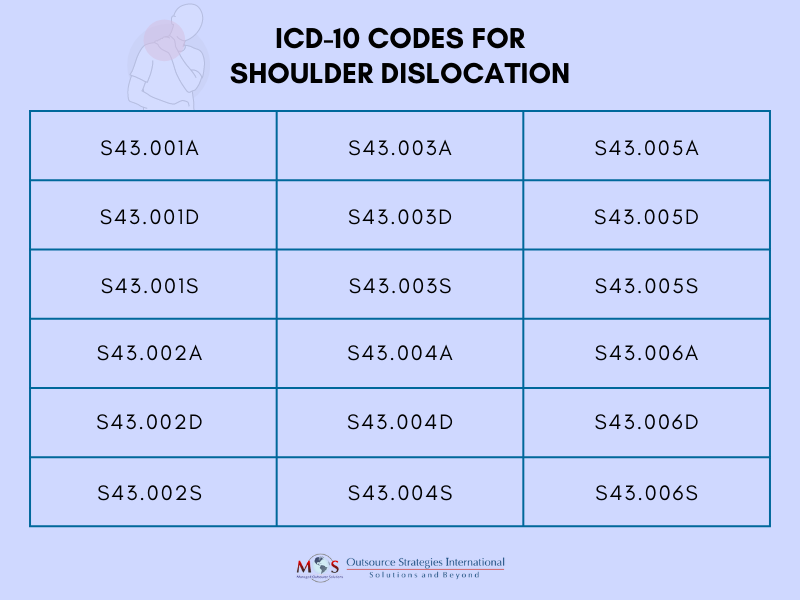Shoulder dislocation happens when the humerus, the top of the upper arm bone, partially or fully moves out of the glenoid, the socket bone of the shoulder. As the shoulder joint is the most mobile joint in the human body, it accounts for about 50 percent of all joint dislocations, with anterior dislocation being the most frequent type. While reporting shoulder dislocation diagnosis and treatment in claims, it is crucial to ensure thorough documentation and assign the correct ICD-10 codes. Physicians can rely on professional medical billing and coding services to accurately report the condition on claims and receive maximum reimbursement.
Common causes of shoulder dislocation are – contact sports, falls, and motor vehicle accidents. Symptoms include severe pain, decreased range of motion of the shoulder, numbness in the arm, bruising and swelling in the shoulder area, and muscle weakness.
Diagnosing shoulder dislocation includes a thorough medical history and physical examination and conducing imaging tests to confirm the nature and extent of the dislocation and the maneuver needed to perform “reduction” or moving the joint back to its correct position.
ICD-10 codes in the S43 series offer increased specificity to report the condition. To ensure right coding, the documentation should specify the positioning, location of the dislocation including laterality (right or left), joint involved, the extent of the dislocation, and encounter. It should also include the cause of the injury (e.g. car accident, fall down stairs). The ICD-10 codes for shoulder dislocations consist of seven characters. The seventh character denotes the encounter (initial, subsequent, or sequela). Unspecified” codes are used when no information is available to support a more specific code:
Coding Shoulder Dislocation with Right Codes
- S43.001A Unspecified subluxation of right shoulder joint, initial encounter
- S43.001D Unspecified subluxation of right shoulder joint, subsequent encounter
- S43.001S Unspecified subluxation of right shoulder joint, sequela
- S43.002A Unspecified subluxation of left shoulder joint, initial encounter
- S43.002D Unspecified subluxation of left shoulder joint, subsequent encounter
- S43.002S Unspecified subluxation of left shoulder joint, sequela
- S43.003A Unspecified subluxation of unspecified shoulder joint, initial encounter
- S43.003D Unspecified subluxation of unspecified shoulder joint, subsequent encounter
- S43.003S Unspecified subluxation of unspecified shoulder joint, sequela
- S43.004A Unspecified dislocation of right shoulder joint, initial encounter
- S43.004D Unspecified dislocation of right shoulder joint, subsequent encounter
- S43.004S Unspecified dislocation of right shoulder joint, sequela
- S43.005A Unspecified dislocation of left shoulder joint, initial encounter
- S43.005D Unspecified dislocation of left shoulder joint, subsequent encounter
- S43.005S Unspecified dislocation of left shoulder joint, sequela
- S43.006A Unspecified dislocation of unspecified shoulder joint, initial encounter
- S43.006D Unspecified dislocation of unspecified shoulder joint, subsequent encounter
- S43.006S Unspecified dislocation of unspecified shoulder joint, sequela
Accurately documenting patient encounters using specific terminology is crucial for correct medical billing and coding. An experienced medical billing and coding company can help physicians ensure accurate coding and claims submission for optimal reimbursement.





